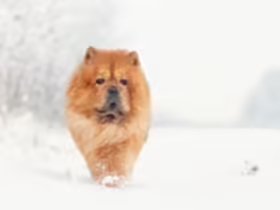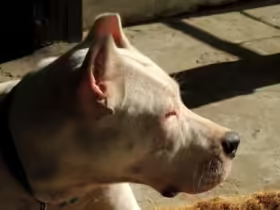The Bullmastiff is a large, loyal, and protective breed known for its devotion and calm demeanor. Originally bred to guard estates, this breed has developed into a family protector and affectionate companion. However, due to its size and natural guarding instincts, the Bullmastiff requires responsible ownership, consistent training, and proper care to thrive.
This guide will provide insights into the Bullmastiff’s temperament, training needs, and overall care tips for raising a healthy, well-behaved companion.
Table of Contents
- Breed Overview
- Temperament and Personality
- Training Needs
- Exercise Requirements
- Nutrition
- Health Concerns
- Creating a Balanced Environment
- Final Thoughts
1. Breed Overview
- Breed Group: Working Group
- Height: 24 to 27 inches
- Weight: 100 to 130 pounds
- Lifespan: 7-10 years
- Coat Type: Short, dense coat, minimal grooming required
The Bullmastiff was originally developed in England during the 19th century to protect large estates and guard against poachers. This breed is a cross between the Mastiff and Bulldog, combining the size and strength of the Mastiff with the tenacity of the Bulldog. Bullmastiffs are powerful yet calm, making them excellent guardians and loyal family members.
2. Temperament and Personality
Bullmastiffs are known for their loyal, protective, and affectionate nature, particularly with family members.
- Loyal and Protective: Bullmastiffs are extremely loyal and protective of their families, making them natural guard dogs.
- Calm and Gentle: Despite their size, Bullmastiffs are generally calm and gentle, especially when properly trained and socialized.
- Confident and Brave: This breed has a natural confidence and courage, which makes them excellent watchdogs.
- Reserved with Strangers: Bullmastiffs can be aloof with strangers but are not typically aggressive unless they sense a threat.
Tip: Socializing your Bullmastiff from a young age helps them feel comfortable and confident in different environments and around new people.
3. Training Needs
Bullmastiffs are intelligent and quick learners, but they also have a strong, independent streak. Training is essential to ensure they grow into well-behaved companions.
- Positive Reinforcement: Bullmastiffs respond best to gentle, reward-based training methods using treats and praise.
- Early Socialization: Introduce your Bullmastiff to various people, environments, and other animals as a puppy to reduce their natural wariness of strangers.
- Obedience Training: Basic commands like sit, stay, come, and heel are important for this large breed to establish control and prevent unwanted behavior.
- Consistent Boundaries: Bullmastiffs thrive with a confident, calm owner who sets clear and consistent rules.
Training Tips:
- Be Patient and Firm: Avoid harsh corrections; instead, use a firm but gentle approach to manage their stubbornness.
- Keep Sessions Short: Bullmastiffs have a short attention span, so keep training sessions brief and engaging.
- Build Trust: Establish a trusting relationship by being calm and consistent, which reinforces their loyalty and respect.
4. Exercise Requirements
Despite their size, Bullmastiffs have moderate energy levels and do not require intense exercise. However, regular activity is necessary to keep them fit and prevent boredom.
- Daily Walks: Aim for two 30-minute walks each day to meet their exercise needs without overexertion.
- Mental Stimulation: Engage them with toys and games that challenge their mind, like puzzle feeders and obedience exercises.
- Structured Play: Bullmastiffs enjoy structured playtime with family members, especially in a fenced yard where they can move safely.
Tip: Avoid high-impact activities or long runs, as these can strain their joints and are not ideal for Bullmastiffs.
5. Nutrition
Proper nutrition is essential for maintaining the health and energy levels of a Bullmastiff.
- High-Quality Protein: A diet rich in high-quality protein supports their muscular build and overall health.
- Joint Support: Include foods or supplements with glucosamine and chondroitin to support joint health, particularly as they age.
- Portion Control: Due to their size, Bullmastiffs are prone to weight gain, so monitor portion sizes and avoid overfeeding.
- Hydration: Ensure your Bullmastiff has access to fresh water, especially in warmer weather or after exercise.
Feeding Tip: Split their daily food intake into two meals to help manage their weight and reduce the risk of bloat, a condition that can affect larger breeds.
6. Health Concerns
Bullmastiffs are generally healthy but can be prone to specific health issues. Regular vet checkups and preventative care are key to maintaining their health.
- Hip and Elbow Dysplasia: Common in large breeds, this condition affects joint health and mobility.
- Bloat (Gastric Dilatation-Volvulus): Bullmastiffs are at risk of bloat, a serious condition that requires immediate medical attention.
- Heart Disease: Some Bullmastiffs are prone to heart issues, so regular veterinary checkups are important.
- Cancer: Bullmastiffs are susceptible to certain cancers, such as lymphoma and mast cell tumors.
Preventative Care: Schedule regular veterinary checkups, provide a balanced diet, and manage their weight to help prevent or manage these health concerns. Additionally, early screening for joint issues is recommended.
7. Creating a Balanced Environment
Bullmastiffs thrive in a structured, balanced environment with consistent routines and positive reinforcement.
- Set Clear Boundaries: Establish house rules early on to help them understand their place in the family hierarchy.
- Socialize Regularly: Continue socializing them throughout their life to maintain a friendly disposition toward people and other animals.
- Provide a Safe Space: Designate a quiet area with a comfortable bed where they can relax and retreat when needed.
- Engage in Family Life: Bullmastiffs are family-oriented and enjoy spending time with their loved ones, so include them in daily activities whenever possible.
Tip: Bullmastiffs are sensitive to heat, so provide plenty of shade and water in hot weather, and avoid strenuous exercise during peak temperatures.
8. Final Thoughts
The Bullmastiff is a loving, loyal, and courageous breed that brings both strength and gentleness to the home. While their protective instincts are strong, they are also affectionate and gentle with family members when properly trained and socialized.
Raising a Bullmastiff requires commitment, patience, and a structured environment, but the rewards are well worth it. With the right guidance and care, your Bullmastiff will be a devoted and protective companion, offering years of companionship and loyalty.











Leave a Reply